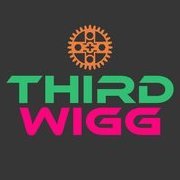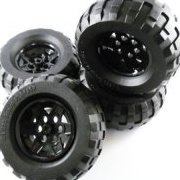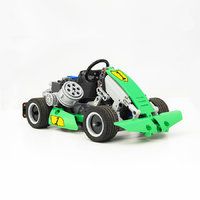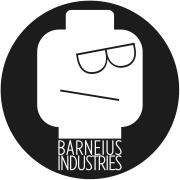Search the Community
Showing results for tags 'instructions'.
Found 251 results
-
This is the final version of my Imperial TIE Fighter based on original LEGO sets. I've made PDF step-by-step instructions as well. If anyone would like to build this one, instructions are available at rebrickable.com for 6,99 Euro here: https://rebrickable.com/mocs/MOC-19900/barneius/imperial-twin-ion-engine-fighter/#comments Imperial TIE Fighter Lego MOC / MOD by barneius, on Flickr Imperial TIE Fighter Lego MOC / MOD by barneius, on Flickr Imperial TIE Fighter Lego MOC / MOD by barneius, on Flickr Imperial TIE Fighter Lego MOC / MOD by barneius, on Flickr Imperial TIE Fighter Lego MOC / MOD by barneius, on Flickr Imperial TIE Fighter Lego MOC / MOD by barneius, on Flickr Imperial TIE Fighter Lego MOC / MOD by barneius, on Flickr Imperial TIE Fighter Lego MOC / MOD by barneius, on Flickr Imperial TIE Fighter Lego MOC / MOD by barneius, on Flickr Imperial TIE Fighter Lego MOC / MOD by barneius, on Flickr Imperial TIE Fighter Lego MOC / MOD by barneius, on Flickr Imperial TIE Fighter Lego MOC / MOD by barneius, on Flickr
-

Instructions from the Getting Started With LEGO Trains book
JECook1997 posted a topic in LEGO Train Tech
Hello everybody Does anyone here have the book 'Getting Started with LEGO Trains' by Jacob Mckee from 2003? If so, Would they be able to post a PDF of the instructions and parts list for the reefer boxcar? I've seen pictures of it and would love to build one myself but paying $60 for the book is a no go. Also, if the other instructions were posted this thread could be a good reference for anyone else who would like to build the other models from the book. Thanks in advance -
Instructions available here. I'm sure I'm not the only who on one hand appreciated the different direction Lego took with the DD design, but on the other hand found it hard to incorporate seemlessly into an existing town layout, since the architectural style is so distinct. So I set out to rebuild the set in a style more resembling the other modulars. And the result is the Internet Café Corner Modular. I almost gave up halfway through when I realized there wasn't enough bricks to build all the side walls I wanted, but in the end I managed to scrape together enough pieces to build everything I set out to. The first floor contains a couple computers to use for internet access and a small café with free Wi-Fi. The second floor has some living space and the rooftop a small garden.
- 7 replies
-
- 10260
- downtown diner
-
(and 6 more)
Tagged with:
-
This creation is ispired by the Star Wars universe and condensed in the LEGO format of a Skyline Architecture set. There are a lot of scenes, locations and vehicles recreated from the first two trilogies. If you can't spot them all there is a list in the following link. Instructions There are more than 790 pieces so it's jam packed :) Dimensions 792 pieces cm 37.5x 10 x 19 inch 15 x 4 x 7.5 studs 47 x 12.5 x 23.5 weight 388 gr / 13.7 oz The vehicles design have been inspired by advent calendars and other creations in microscale I found around the web. Most (if not all) of them needed to be reduced in size to fit the Skyline or adapted to be attached firmly and integrated in the little scenes that have been recreated. Hope you like it! Let me know what you think about it :) P.S. I know that maybe one for trilogy would be better or even one for movie You can find more images on my flickr page
- 15 replies
-
It feels strange... but it seems to be done :) I don't know if anyone is still waiting for this, but if so, hear me out: The instructions are completed and available! Model Specifications: 1580 pcs./pzs. (1491 without stand) Weight: approx. 1 kg (2 lbs) Length: 44 cm (17 2/8") Width: 22 cm (8 5/8") Height: 13 cm (5 2/8"), + extra 10 cm (4") with stand I tried my best to design a detailed and accurate, yet relatively sturdy and swooshable model. Important (for me anyway) aspect is the exclusive use of currently produced and available parts (as of 2018). The average part cost I obtained during several attempts using BrickLink 'Easy Buy' option applied on the part list was ~ $180 + S&H from 2-5 stores. That's based in central Europe, buying only NEW parts and not optimizing for arbitrary colors of some parts. The lowest cost I have been able to reach was $140 + S&H, when buying all internal parts as 'non applicable' color. Safe to say I was pleasantly surprised by both price and the low number of required orders. Sure I might have been lucky, but over several tries in the span of last month or so, the number of different stores required to get the complete part list stayed consistently low. Building Instructions: 235 page high quality .pdf file Carefully crafted Stud.io based quality (if I say so :D) step by step instructions Preface containing (perhaps interesting) information about the model development, and helpful build notes and tips for increased building comfort Two part lists in .XML format are included, one for the ship, the other one for the stand I took way more time with this than I should have and a lot of that time was spent on inefficient fiddling with some unimportant detail :) Sorry about that, that's simply how I am. I hope that at least some of the effort was worth it ant someone will appreciate it. I decided to price it at $20 If you are interested in getting the instructions, please email me at kristofpucejdl@gmail.com Cheers! Kristof
- 44 replies
-
- venator
- instructions
-
(and 1 more)
Tagged with:
-
Hi everybody! I've decided to start sharing a few ideas and tips for building some of my own creations - starting with this minifig-scale drinking fountain. Why not have a go?! Uses less than 30 pcs.... https://flic.kr/s/aHsmqDoDnP (click this link, not the pic, for full instruction pics)
- 12 replies
-
- grey
- how to build a fountain
- (and 24 more)
-
I've modified the motorcycle (part 52035), used since 2005, in three different ways - basic, long axle, and reverse trike. Expect an instruction video for the reverse trike to follow.
- 1 reply
-
- trike
- motorcycle
-
(and 1 more)
Tagged with:
-
This is my version of the iconic RV from the hit television series Breaking Bad. The Fleetwood Bounder, better known as the RV, was a motorhome that served as a mobile laboratory in which Walter White and Jesse Pinkman cooked methamphetamine. Jesse nicknamed the RV "The Krystal Ship." The model includes detailed interior, and has an opening side door. I created the model in Stud.io and then ordered the pieces to build it in real life :) Hope you like it, contact me if you are interested in gettin' the stud.io file and offer me a beer *minifigs are custom
-
Finally finished this after 18 months of tweaks and fussing around. Due to requests, you can get the building guide/instructions here: http://www.brickmonster.toys
- 6 replies
-
- winter village
- moc
-
(and 1 more)
Tagged with:
-
Backstory: Ever since I emerged from my dark age I was mesmerized by Designer Han’s models – especially dragline excavator. I like all kind of excavators so I was slowly gathering pieces for it to buy instructions and build it. I have realized over the time that building from instructions is not entertaining for me and that I can build almost anything if I have the drive (and parts). I still admire Han’s models, but I know that I would be disappointed because of his design choices. Don’t get me wrong – I still like his work, but I don’t want to build it anymore. Long story short – I wanted my own dragline excavator with truck transport. Preparations: First of all I had to pick a reference machine, in this case Sennebogen HD 670 tracked crane. Why this one? Sennebogen because it is not very known and because of this fantastic die cast model: http://www.cranesetc.co.uk/library/rosreviews/203/203review.htm . Such models are very good because you can see the machine from a lot of angles and you can replicate small details from them more easily. The model is however 690HD and I have picked smaller 70 ton 670HD. This is because of whole concept with transport truck. The scale is dictated by wheels, in this case by wheels on truck and wheels on excavator as well. Since TLG is making only two wheels for tracked vehicles it is simple choice. With bigger tracked wheels the scale is 21,5:1, meaning that 49,5mm tires for truck are perfect fit. 690HD with the same wheels would be closer to 23:1 and we do not have truck wheels for this scale. Features: Undercarriage Real crawlers have either retractable tracks or dismount them completely when transported. In order to achieve that I had to place all motors to superstructure and use single battery box. As you can see from datasheet, the tracks can be retracted so they are not wider than body. To replicate it I have built it in such way that both tracks are very easily detachable from central piece that can be swapped for narrow one. Replacing this central piece doesn’t take more than few minutes, it is only necessary to take apart two liftarms on each side as seen in the picture. Another stud or two narrower tracks would be probably better, but I would certainly lose the ability to swap it easily. All four wheels are driven by two shafts from superstructure connected to M motors; final ratio is 9,265:1. Wide track Narrow track IMGP5236 Superstructure The superstructure holds six motors (4x M-motor and 2x L-motor) – two M motors are for tracks, 1x M motor is for slewing via worm gear on turntable (56:1) and rest are for winches. Slewing gave me quite a headache because of the desired gear ratio. The real machine can rotate up to 4 revolutions per minute so I wanted to replicate that. In the end the only viable solution was to use older turntable driven by worn gear without further gear reductions. I use train PF remote to start and stop smoothly. The usage of older turntable meant I had to shorten boom because of its less stability as it bends significantly more than new type. The A frame is fixed – the boom is raised by pulling floating pulleys with attached ropes. Bigger machines uses movable A frame where the angle between A frame and boom is fixed. The A frame can be folded down when the crawler is transported. A frame is Pythagorean triplet with beams length 29-21-20. There are 3 winches for boom raising, bucket lifting and bucket drag. All three are equally geared 5:1. Counterweight is detachable as on real machine, it of course holds standard Technic battery box. Cabin features opening doors and foldable walkway. IMGP5220 IMGP5222 Ready for work side by side Boom Booms on real machines are made out of several truss elements bolted together. There is usually lower boom section that stays on crawler when transported, then are intermediate sections in various lengths (2,9m, 5,7, and 11,2m) and then headpiece section. I wanted to replicate this kind of boom so I focused on correct shape of each section and size as well. This mean that the lower boom section is pyramid-shape: 5x1 studs wide at crawler side and 9x9 studs at opposite end. I guess not all connections on it are TLG legal, but everything fits nicely without any stress and thanks to it truss-like constructions it is very sturdy. The same principle follows at intermediate section, in my case the shortest one (2920 mm => 17 studs). Boom ends with headpiece that is quite similar to lower section but ends with two pulleys. They are of course not real pulleys as TLG doesn’t make anything free-spinning in that size but size was more important to me. The drawback of such modular boom is its weight; it is almost double the weight of boom that would be built in one piece so I had to stay low with total length. There are also two pulleys serving as fairlead so the rope dragging the bucket goes to winch from top, the fairlead pulleys are mounted on lever so they stay in same position regardless of boom angle. Headpiece side comparsion boom Bucket It is brick-build and its size is only guessed from pictures and its volume, I was unable to find any datasheets with buckets. Bucket Greebling, look and difficulties As usually I pay a lot of attention to greebling like railings, mirrors, cabin shape, lights and other small details. I really had fun with this model as it is quite packed with it. The biggest obstacle during the build was constant lack of parts. Together with truck and low-loader it is reaching 4000 pieces and I was even running low on both 2l and 3l pins once. I had selected yellow color at the start, green would be certainly better for Sennebogen, but I already had some yellow parts and green technic is very expensive. Beside that I have seen pictures of Sennebogen machines in various colors like yellow, red and blue, so I think it is fine. The whole internal build is very symmetric; the only asymmetric is gearing on left side for slewing and gearing on right for drag winch. IMGP5223 Playability Honestly, playability sucks. There is one important feature of real dragline omitted – free fall winches. Without it you can place bucket too close and drag it only few centimeters. Grabbing anything with the bucket is also very difficult. Drive and slew works very well though. Truck The truck is very loosely based on this real counterpart: http://www.ditzj.de/html/en/trucks/scania/wiesbr500.html i.e. 8x4 tractor with short wheelbase, 2 steered axles, high cabin and tower behind it. It is driven by L-motor and servo is used for steering. Both steerable axles use the same configuration like in my previous truck – 5l steering arms and hubs with 3 ball joints. There is of course Ackermann steering and different angle on both axles. Rear axles are connected to fake V6 engine. Cabin features two seats, IR receiver between them and steering wheel. Whole cabin can tilt to reveal engine. Gear ratio from L motor is 7:1 because it is meant to haul quite a lot of weight. The truck can be easily modified to low cabin version as the high roof is only held by four pins. The tower is too high then so it is replaced with bare battery box. The whole truck is quite heavy on front and it have sometimes trouble with driving when it is without load so it is possible to add ballast box on its fifth wheel. There is also coupling for draw ball trailer, but it is not meant for pulling. I think the most difficult part of design was not to copy my previous truck. The cabin is still quite similar, I’m aware of that, but in the end I’m happy with other small details that makes it different – flags on front, mud flaps, detachable roof, etc. IMGP5248 IMGP5249 Working fake engine Low cabin Ballast box Low-loader Low loader with detachable gooseneck is based on Motomat’s trailer because in the end you realize there is only one viable way how to build it – two technic beams with plates between. A little challenge was how to mount wheels without using single axle for both sides. The frame between wheels can be only 4 studs wide meaning the axle can be supported by 2 studs. I have used 8L axle with stop supported by thin liftarms. In the end the wheels are supported enough, they can rotate freely and you can take them apart without axle. IMGP5260 Lowloader with detachable gooseneck Instructions I have made instructions for dragline and truck as well. Lowloader will follow soon. Both will appear on Rebrickable soon, I will add link here later. Due to amount of work it took I will sell instructions for dragline for 10€ and truck for 5€. Lowloader will be free as it is not something trully mine. Both instructions are as usually PDF generated by LPub3D. Especially the dragline is compressed into as few steps as possible, with only 115 pages (~2400 parts), so if you don't like TLG instructions for beeing too easy this might be something for you. Dragline rebrickable link: https://rebrickable.com/mocs/MOC-17193/Ivan_M/dragline-excavator/#parts Video & gallery Whole gallery is here: https://flic.kr/s/aHskDJiTT8 And one crappy video for end:
-
After some tweaks and revisions to the model, Cavegod's First Order Special Forces Tie Fighter is ready to be released to the public! The MOC itself contains 1,691 parts, and its manual is 91 pages long. The MOC is built to match the scale of the UCS Tie Fighter released by The Lego Group in 2015. One of the big changes is that the wing color has been switched from white to Light Bluish Gray to better represent the true color of the wings. In some of the photos attached to this post you will see white wings, those photos are from the original model. It should be noted that this MOC can easily be converted into a standard First Order Tie Fighter by switching the red pieces to black. Lots of interest has been generated for this MOC, and Cavegod and I are really glad to make its release to the community! If you would like to build this MOC, we are happy to share it with you in exchange for $20. Included is the pdf instruction manual, an xml part list, LDD files, and any help you need throughout the process of making the MOC. For more information please PM me or contact me at chrdvorak@hotmail.com A rebrickable page with a parts list will be live soon, and will be posted here: {filler} Here are some pictures of the MOC and of the pdf manual:
- 7 replies
-
- tie fighter
- first order
-
(and 2 more)
Tagged with:
-
Book Review (Review by Thorsten Benter) Almost a year has passed since initial publication of this book. There are a number of on-line reviews available – this one on EB seems to come in a bit late. Well, I don’t think so, in contrast. This book is a comprehensive how-to-build-a-train resource rather than a compilation of what is out there. And this sets the book aside from so many others. It will be up-to-date as long as The LEGO Company produces bricks and sets. Plus, with the arrival of the Powered Up system, more space becomes available inside the train body as compared to comparable PF functionality: The dedicated receiver becomes obsolete and no line of sight is required for communication creating some additional space – space for sophisticated building techniques! This books tells you everything you need to know about the historical LEGO train theme development at TLG, about scales and widths, about pivot points, microstriping, SNOTing and offsetting, and so much more with relevance to train building! (Note: A PDF copy of this review with higher resolution pictures will be shortly available at Holger’s website) Summary: A must-have for every LEGO train fan, for people entertaining the idea of getting into LEGO trains, and for people who still don’t know that they will become train fans after reading the book Superb photography of LEGO models, outstanding renders of CAD models In-depth analysis and assessment of the different LEGO train eras Demonstration and teaching of advanced building and design skills My personal LEGO book score: 10/10 About the book: Author: Holger Matthes Published: Oct. 2017 by No Starch Press Inc., San Francisco, CA, USA. Hardcover, 135 pages + 90(+) pages reserved for 4 full building instructions (ICE train, gondola car, Swiss Crocodile, and a vintage passenger coach), 150+ most relevant and educational figures (excluding the beautiful chapter openers or page breakers as well as the set building instructions), 20+ tables including bulleted lists. ISBN: 1-59327-819-5 Price: € 14 (Kindle edition, Amazon); € 23 (Print edition, Amazon) both as of 9-2018. $ 19 (ebook only), $ 25 (ebook and print edition, nostarch.com) both as of 9-2018. The present English edition published by No Starch Press is based on the initial German edition “LEGO Eisenbahn – Konzepte und Techniken für realistische Modelle”, which was originally published by dpunkt Verlag Heidelberg, ISBN: 978-3-86490-355-7. The initial German edition of the book based on Holger’s manuscript composed in 2015/16 caught the attention of foreign publishers: It began with the present English edition in 2017. It then took a bit longer until the Chinese publisher “Posts & Telecom Press” (who has already published a bunch of LEGO books written by fans) very recently released the Chinese version: http://www.ptpress.com.cn/shopping/buy?bookId=0ed0cd68-ca59-41fc-9bf9-193b06089996 (ISBN: 978-7-115-48419-2): After publication in 2017, No Starch Press’ English version became the reference for further translations. In summer 2018, the Spanish (“LEGO TRENES”; LEGO TRENES https://www.amazon.es/TRENES-Libros-Singulares-Holger-Matthes/dp/8441540179) and the Italian (“TRENI LEGO”; https://www.amazon.it/Treni-Lego-colori-Holger-Matthes/dp/8868956411) editions became available. And the Russian version is on its way (sorry, Holger couldn’t tell me any further information about its availability): (Note that the Russian cover on the right is purely made up by me – Google translator says the Cyrillic headline reads “in preparation” – but who knows …) About the author Holger Matthes is a hobbyist who has been building with LEGO since 2000. He was involved in the creation of various official LEGO projects such as the Hobby Train set #10183 and frequently presents his models and gives workshops at LEGO exhibitions worldwide [copied from Amazon website]. Table of content of the book (short version) Part 1: Overview and history Introduction A history of LEGO trains Part 2: Building your own train models (My own creations – MOCs) Basic principles Designing your own models Case studies in design Part 3: Building instructions A note on the included building instructions Appended to the body of the book, you’ll find four high quality and carefully composed instructions in addition to two free online instructions: Inter-City Express (ICE; driving and trailer cars, PF motorization, windshield designs) Gondola car Swiss electric Be 6/6 “Crocodile” Vintage passenger car Steam Engine BR 10 (as bonus online available at http://holgermatthes.de/bricks/en/br10.php) Steam Engine BR 80 (as bonus online available at http://holgermatthes.de/bricks/en/br80.php) There is further information available online. Holger directs you to https://www.nostarch.com/legotrains; but most of the very valuable stuff is actually hosted on his website. I highly recommend to visit his site: http://www.holgermatthes.de/bricks/en/index.php. You will find a wealth of background information, tips&tricks, how-to, and much more. The Book Let’s face it: Almost one year after initial publication, Holger still sets the stage with this book for LEGO train fans. It will be tough to get it much further; not on 135 pages (not counting the instructions pages), not with regard to the topics covered, not with regard to the width of the audience addressed. This book provides diverse perspectives on the art of building LEGO trains, coaches, and rolling stock – and is at the same time always determined, focused, and addresses most relevant “issues”. Train builders repeatedly face tough challenges: A train is not a building, which simply resides in all its beauty; rather trains are work horses – either hauling heavy cargo loads or endless passenger coaches, or switching rolling stock for hours and hours in a train show – or on your personal layout. At the same time, a LEGO train is “beautiful” and “esthetic” in the recognition of a train fan - as a building is for City fans. However, to be able to render real trains into LEGO models, regardless on the scale used, requires some serious knowledge about the myriads of LEGO bricks available, about advanced building techniques, and even electrical wiring skills. There simply isn’t much space in a LEGO train. Space as in “Space … is big. Really big. You just won't believe how vastly, hugely, mind-bogglingly big it is. I mean, you may think it's a long way down the road to the chemist's, but that's just peanuts to space.” [Douglas Adams, The Hitchhikers Guide to the Galaxy, 1979]. It is usually >extremely< packed inside a LEGO train model, particularly when electrifying it. Shaping the outer appearance with advanced building methods such as SNOT or angled and carefully secured pieces usually eats up all the space inside the hull. And lastly: Trains need to be sturdy. They not only haul heavy loads – they also have to run endless distances on track – in the best case on long stretches of straight track and smooth curves, here and there a bit bumpy – in the worst case negotiating endless and sharply bent curves and switch points in complex rail yards. This is exactly what Holger addresses in his book: How to achieve a sturdy, reliable, and at the same time esthetic and beautiful train. And we should just get it straight from the very beginning: Stickers are frequently recognized as the “icing on the cake”. And this is certainly true. BUT: Believe it or not, you can also legally “build” tiny lines, sloped coloring, narrowly split windows and much more when using advanced building techniques! And that sets aside this book from so many postings, building instructions, and other resources: Holger shows us how to accomplish “brick-built stickering” by using the endless variety of bricks and plates to build streamlined and nicely accentuated and smooth surfaces – rather than using the bulky, essentially non-LEGO-philosophy-but-by-TLG-released ICE #55768 nose with stickers attached all over it … There is so much more in the book. This is what I am trying to highlight in the following. Holger’s book is a must for us all: Beginners, advanced builders, as well as Train Tech gurus! And those who believe that they already are. One more thing to add: Photography and CAD image rendering. Or: A picture is worth a thousand words. Holger says: “The biggest thank you goes out to my old friend and master photographer Andy Bahler, without whose pictures this book would have been useless. His commitment, night after night, was above and beyond expectation …” The pictures are spectacular – you will notice right away. Organization of the book There are three parts in this book, although there is no such explicit assignment in the table of contents. Holger tells us on page 2 though: “The first part of the book gives an overview of LEGO trains over the different eras, covers some history, and answers questions about how to combine old LEGO trains from the attic with today’s kits. The second part of the book is about building your own LEGO train models, also known as My Own Creations (MOCs). Using my many years of experience building LEGO models, I’ll show you how to create proper train models, covering both the possibilities and the limitations. Finally, the book ends with step-by-step building instructions for several models.” Usually, the table of content is a good starting point for the organization analysis. However, this book is extremely focused and self-contained in each of the chapters of the three parts. This is very helpful (and also very different from other books), as the LEGO universe, including train worlds, is as diverse as it possibly gets. The number of pieces alone currently available through TLC’s official channels such as LEGO sets, PaB, and LEGO stores – or even more so – through the uncountable BrickLink stores around the globe is truly mind-boggling. Well, it is not only the sheer number, but more so the endless combinations possible – and what you achieve with such. Chances are: One gets rapidly lost and a little frustrated. Exactly this is NOT happening when “reading” this book. OK. We do it differently – as it seems appropriate for a “different” book: We walk through, as the very nice and focused organization of the book simply allows that. Part 1 “INTRODUCTION Decades ago, the toy designers at LEGO likely never imagined how durable their work would be. Today, parents can dust off their childhood LEGO trains and play together with their children who have just received their first brand-new LEGO train set. And fans of all ages can revive older sets and parts to create entirely new models.” In order to prevent such an almost natural “disorientation” or lost in parts and ways to connect them, in part one the book begins with a review of on-line resources. Information-, instruction-, and brick-availability-wise. Holger lists only the most relevant internet locations. Start here and progress further on your own. It makes your building life so much easier. As with every printed book, online references may become outdated at some point in time. Holger names thus only most reliable web portals, which will most probably exist for a long time. “A HISTORY OF LEGO TRAINS Let’s explore the evolution of the LEGO train systems from the earliest set to the present.” Next, there is a historical review of which type of train system was available at what time defining an era. This is rather significant. First of all, this approach results in a theme classification rather than a temporal evolution of sets: The blue, grey, 9V, RC, and PF era. As the pieces from different areas are naturally largely interchangeable (otherwise it would not be LEGO!), you may mix them as you see fit. Nevertheless, each era has a certain typical appearance – if you want to capture that, you need to know what was going on during that particular era. As an example, people in love with the grey (12 V) era often capture the look and feel of that time – for example studs everywhere, not many curved bricks/diverse slopes (as they were not available at that time) – rather limited colors schemes, black, red, and yellow ... The reader learns what has been produced when and in what color scheme. There is also ample of information on the technical features of each era – it appears as if the author is deeply involved and well connected in the LEGO train community – all the way up to participate in the design of selected sets. Holger shares his knowledge with the reader – always in a concise and focused way. It is pointed out that Holger is not even attempting to compile a complete list of sets available within the different eras – in contrast, he is summarizing the unique era characteristics and features. He focuses on power sources, tracks (including switches and crossings), and other elements (wheels, baseplates, in addition to unique features, such as trucks, couplings and buffers). The grey (12 V) era sections stands out of course, as this was the most diverse and most creative train theme ever (IMHO, of course!). Here you will find an – again unique – compilation of “remote-controlled accessories”, “windows and doors”, “light bricks”, “weighted bricks” … What I personally find extremely useful – and it must have been a considerable effort – is i) a summary table, listing the most important features of each era, and ii) Holger’s evaluation of these features he headlines as “Seen from today’s perspective”. Even long-time and experienced train enthusiasts will surely find valuable information in this chapter! Part 2 “BASIC PRINCIPLES Let’s dive into the world of LEGO elements and explore the endless ways to connect them.” Now that one knows the individual features of the different eras, Holger opens part two of the book with a compilation of relevant LEGO pieces for train building. It is really surprising how many there are! I have built trains myself – seeing all the various elements nicely grouped and organized makes it so much easier to get an overview of individual pieces, select the ones you may want to try out – and compare them to other options. This section is extremely helpful when you start off with a new model – or when you want to overhaul an already existing train. In the following section, Holger introduces typical train specific building techniques (although you can use many of them throughout the entire LEGO universe!). And is not surprising that there are eleven dedicated pages on SNOTing and fractional-plate offsetting in all three dimensions. These are the most crucial techniques when shaping the look of a train. SNOT (studs not on top) is a powerful technique and has become very popular among train fans. Originally rather restricted to a few elements, which allowed to “reverse” the building order, the LEGO Company has released a broad variety of SNOT elements over time. These are of course also shown in the preceding chapter on relevant LEGO train pieces. I’d say that this chapter is extremely important for beginners and of great interest to experts as there are various approaches shown side-by-side. At least for me this chapter is highly inspiring. The same is true for plate offsetting, i.e., building with only one half stud or even less displacement off the stud grid. First, the look of a train becomes much smoother even when not using curved bricks; secondly, this technique allows you to literally “build” colored surfaces with fine structures and even thin stripes (called microstriping). Without using stickers that is … Ever used minifig guns to create pantographs? Or ice skates as door handles? No? Well – Holger shows you! “DESIGNING YOUR OWN MODELS You might be wondering if you’re ready to begin making your own models. Which train should you build? Maybe you should start with the commuter train that takes you to work every day, or a freight train? And who hasn’t dreamed of a beautiful steam engine in LEGO?” Now we are getting down to business. The following two chapters of part 2 are not about “building a train” – they are about “how to do it right”. We are talking about scaling and modeling rather than “pushing along”. Before Holger goes into details though, he points out the importance of thoroughly choosing a scale. This is an extremely important decision to be made when attempting to model a real-world train. How much detailing is required? How much abstraction is allowed? Citing Holger again (page 73): “Building a recognizable model isn’t about scaling every part exactly, although proportion matters. Intentionally omitting some details or exaggerating others is usually necessary. Scale modeling with LEGO is a bit like drawing a caricature: the end result may not be an exact likeness, but it is recognizable and undeniable.” We learn about model scales (1, L, O, HO …), alternative approaches (scaling by wheel size) as well as choosing a model width (6-, 7-, 8-stud-wide). Don’t mix these up – almost any scale may be used for any track width! There are so many diverse examples here on EB. Holger narrows the scope of widths covered in his book to 6 - 8 stud wide (see cover page of the book), as these are the widths most builders choose – in addition to the official 6-wide LEGO models. He discusses the advantages and downsides of each of these widths in detail. A very important aspect when designing and building a LEGO train – regardless of the model scale – is the official LEGO track geometry. Maximum distances of fixed axles, alleviation of this rather restricted distance using articulated single trucks (a theme repeatedly discussed here on EB), sliding middle axles in three axle trucks – you will find all the answers in this book. When it comes to attaching cars to each other – even more design aspects have to be considered, which are all discussed: Pivot points vs car distance, additional pivot points to reduce car distance, the effect of pivot points on design issues, to name a few. And then: Steam engine design: 7 full pages! As far as I am concerned, steam engines are the most challenging models to render in LEGO. To say it with Anthony Sava’s words: “I'd buy a set with a steam engine in it, but I have little interest in buying a box on wheels.” (EB Forum, April 2nd 2018). Holger shows us all the challenges and caveats. The remaining sections in this chapter are: Power and Control, discussing mostly the implementation of PF elements, Modeling Details, and Track Design and Layout. Again, extremely valuable information and guides are given. One comment on third party suppliers: At the time of writing this book, both SBrick controllers (as a replacement for PF receivers, featuring wireless Bluetooth connectivity) as well as ME Models (as a supplier of wider radii curves) were actively present on the market. As of now (i.e., August 2018) though, the new LEGO Powered Up system introduced lately makes SBricks for trains almost obsolete – and Me Models have gone out of business some time ago. There are a good number of very good 3rd party alternatives for additional track pieces – large curve radii, complex switch point geometries to name only a few. They come as superb injection molded pieces which are almost indistinguishable from original LEGO track, as well as 3D printed varieties. I believe that a book of the format Holger has chosen simply does have to deal in-depth with such developments as they are much more volatile than almost any LEGO product. Taking aside the LEGO RC interim solution of course. But again, Holger gives a full account of why RC happened at all and why its lifetime was even shorter than that of many 3rd party small businesses. I really enjoyed this section very much. Regarding very recent developments by TLG naturally not covered in the book (the original German manuscript was written in 2015/16): The introduction of the Powered Up system leaves much more space within a train engine so that all the building tips and tricks provided in Holger’s book become even more intriguing! It appears as we can even more freely combine advanced power/remote control options with the present advanced building instructions. Which makes this book even more valuable! “CASE STUDIES IN DESIGN Armed with the tools and knowledge about LEGO modeling covered in the previous chapters, we’ll now take a closer look at the actual design process using some of my own builds as a guide.” This chapter needs to be explored – interpreted – by yourself. This is – as far as I am concerned – the heart of the book. Here you will learn how to begin designing a model. I find this part the most difficult: How to begin – looking at the all the bricks, plates, slopes, clips, there are so many of them … so we should take this to our heart: “Designing a model is a creative and personal process: there’s no right or wrong way to build a successful model. The guidelines in this section are meant to get you started. You’ll certainly develop your own strategies along the way.” Along with: Decide on a scale and choose the width: 6-, 7-, or 8-wide? Decide how the train will be powered and what type of track it’ll run on. Choose a target audience: should it be a realistic, recognizable model, or are play functions more important? You will notice: This is about >you<! Nevertheless, you will also learn a lot in this chapter. Holger has chosen a regional express train (Bombardier double deck train), a powerful electric locomotive (Siemens Vectron engine), and a (well, Holger is German after all …) steam engine (BR 10) as case studies. This is a very clever selection – as the techniques he shows apply to almost every engine I am aware of – including American diesels as well as American steamers … or all the various European trains, Emanuele (EB member LT12V) is currently presenting here on EB … And finally … Part 3 “BUILDING INSTRUCTIONS! Get inspired with these step-by-step instructions for building an Inter-City Express, a simple gondola, a Swiss Electric Locomotive Be 6/8 “Crocodile,” a vintage passenger car, and a steam engine.” From page 136 to 227 you will find first class, high(est)-quality building instructions for the above referenced models. There is nothing more to add. As said: This book is a must … Play Well! @Jim Thank you very much Jim for giving me the opportunity of writing this review for EB - it was a great pleasure. And for sending me this wonderful book! @HoMa Thank you Holger for writing this book. And for all the additional information you gave me when writing this review and for your comments! Thanks for reading, Thorsten
- 11 replies
-
- 12v
- instructions
-
(and 8 more)
Tagged with:
-

[MOC] Unimog 437
Thirdwigg posted a topic in LEGO Technic, Mindstorms, Model Team and Scale Modeling
I guess you could say I couldn't make up my mind about the kind of Unimog I wanted to make next. So I decided to make a platform that would support multiple versions. Features: Interchangeable platform Long and short wheelbase options Standard and Doka cabs, removable Manual control PF control (drop in) Front and rear suspension Steering 4x4 with I-4 fake motor Opening doors and hood Tipper bed options Feel free to check out thirdwigg.com to learn more about the build. Manual SWB with tipper bed. Manual LWB Doka with tipper bed. Power Functions (XL drive, Servo steering) LWB with cover. Manual LWB with canvas bed showing the suspension travel. You can find more pictures on my flickr. I have been adding instructions for the various versions here, and more will be added over the coming weeks. Someday I'll make a camper, because, everyone needs a camper. This was a fun project, and I loved the way it turned out. I have the LWB on my desk right now, and I keep getting distracted from work. I hope to add additional options for the system at some point, and will take other suggestions for versions to add. Hope you enjoy.- 28 replies
-
- instructions
- suspension
-
(and 3 more)
Tagged with:
-
I have seen two variations of instructions 7860: 1) For the second release 1982-87, the code of instruction is 113483 ©1981. In the instructions, we can see this variation of "Straight Conducting Rail with Rail Interruption" 3242apb01: https://www.bricklink.com/v2/catalog/catalogitem.page?P=3242apb01&idColor=9#T=S&C=9&O={"color":9,"iconly":0} 2) For the third release 1988-94, it is 120622 ©1981 in which we can see this variation of "Straight Conducting Rail with Rail Interruption" 3242bpb01: https://www.bricklink.com/v2/catalog/catalogitem.page?P=3242bpb01#T=S&C=9&O={"color":9,"iconly":0} 3) What about the first release 1980-81? Is there any instructions for it (do you have it?) in which we can see "Straight Conducting Rail with Rail Interruption" 3242a: https://www.bricklink.com/v2/catalog/catalogitem.page?P=3242a&idColor=9
-
I made Instructions for my MOC: 10211 Grand Emporium Alternative buildwith the theme of "Wedding Hall"You can make this Alternative build only using parts of 10211 lego set, without any extra bricks.Model design, Instructions by Inyong Lee Store pages: https://www.ebay.com/itm/Lego-10211-alternative-build-instructions/132595113153?hash=item1edf48dcc1:g:Vs4AAOSwdMBa3hef https://rebrickable.com/mocs/MOC-14248/InyongBricks/10211-alternative-build/
- 10 replies
-
So far, only ONE AFOL has given me the right answer :-) Hi everybody, This one is a real challenge! After the quiz N2 that we had as warm-up, here we are with a harder quiz. I am really curious to know if anybody knows or can find the answer of this one. I would consider a prize for the winner(s). If you are sure you know the answer, please "DO NOT SPOIL", but only pm me. But if you have any guess together with some reasons for your guess, you are very welcome to comment under this post so that we can discuss about it and who knows, maybe we get multiple responses. Here is the question: WHICH INSTRUCTIONS have MORE THAN ONE VERSION? The sets in question are 7710, 7715, 7720, 7722, 7725, 7727, 7730, 7735, 7740, 7745, 7750, 7755, 7760. I believe you cannot find the answer by googling (I couldn't). Good luck :-)
- 29 replies
-
- instructions
- train
-
(and 2 more)
Tagged with:
-

Lego MacPherson Strut Instructions
Legotyres posted a topic in LEGO Technic, Mindstorms, Model Team and Scale Modeling
It's only photos, but it is a design I've been working on for quite a while now. It will work with the standard 7 long steering beam and Track Rod 6mm, it even gives you Ackerman Steering. 17.5mm, 34mm diamiter rims. So that should cover all 1:10 scale models. You can swap the large spring for a smaller and uses these parts at the top one with parts x1 "Tube with double Ø4.85", x1 "Cross Block/form 2 x 2 x 2", x1 "3 with arch with Knob & Shaft Ø3.2", x2 "Technic Lever 2m" and x2 "Axle 3mm with Stoppers". I have only shown instructions for one side, it should be self explanatory on how to make the opposite side Please find photos Here! Lego McPherson Suspension Enjoy.- 4 replies
-
- mcpherson
- suspension
-
(and 3 more)
Tagged with:
-
Hello! -The professional booklet is a HD PDF file with 298 Pages and includes the parts list for Bricklink. -The model is composed of 2849 pieces and measures 80cm x 41cm x 23cm. -The price of the instruction is: 17.50 GBP/20 EUR/25 DOLLARS, to purchase them, please email me: brickforcetoys@gmail.com
- 68 replies
-
- instructions
- stardestroyer
-
(and 2 more)
Tagged with:
-
Hey all, With the release of Go Brick Me, I’m looking to use the bases of the two figures you get plus extra parts in my collection to closely approximate the Comic Con Brickheadz to complete my collection. I was searching for the instructions for any of the convention exclusive Brickheadz online and could only find a Reddit post for 41498 Boba Fett and Han Solo in Carbonite. It looks like the inventories of a few of them (namely the early DC ones) are on BrickLink but I can’t seem to find any instructions besides one YouTube video showing how two of them are made. Thus, does anyone with the sets listed below happen to have the instructions they could share by any chance? Much appreciated! 41490 41491 41492 41493 41496 41497
-
- brickheadz
- comic con
-
(and 1 more)
Tagged with:
-
Hello good people and welcome to my MOC Instructions Shop! First of all, a brief introduction: My name is Art, I am a LEGO enthusiast from Russia, known across the interwebs as TheMugbearer, TheDudeWithACup and CrashSanders. I do digital LEGO MOCs for several years now, a it has become a little bit more than a hobby since then. Several years ago I made a LEGO CUUSOO project about the FTL: Faster Than Light, an award-winning rogue-like videogame. While the project itself didn't get approved, it gained enough attention so that there was a demand for the instructions of the models that were proposed in the project. For this purpose I have recently joined forces with a skilled PDF maker to bring forth the long-awaited instructions booklets. Most of the MOCs that have been committed to PDF instructions are microscale spaceships, mostly because of the FTL project. So here's what I am offering at the moment: (disclaimer: the offered goods are PDF instructions, the preview images on Cubebrush serve only as a demonstration) FTL Bundle MEGA This is the "ultimate" bundle containing instructions for all of the micro-ships from "FTL: Faster Than Light". Cubebrush link: http://cbr.sh/9hgp8h Price: $25 Contents: PDF Instructions and Bricklink Wishlist XMLs of the following models: LEGO FTL #001 "The Kestrel" (Kestrel Cruiser, treated as a free bonus) LEGO FTL #002 "The Gila Monster" (Mantis Cruiser) LEGO FTL #003 "The Osprey" (Federation Cruiser) LEGO FTL #004 "The Nesasio" (Stealth Cruiser) LEGO FTL #005 "The Torus" (Engi Cruiser) LEGO FTL #006 "The Adjudicator" (Zoltan Cruiser) LEGO FTL #007 "The Bulwark" (Rock Cruiser) LEGO FTL #008 "The Man Of War" (Slug Cruiser) LEGO FTL #009 "The Kruos" (Lanius Cruiser) FTL Bundle #1 This smaller bundle offers three out of eight micro-ships from "FTL: Faster Than Light" Cubebrush link: http://cbr.sh/gc7uq3 Price: $9 Contents: PDF Instructions and Bricklink Wishlist XMLs of the following models: LEGO FTL #001 "The Kestrel" (Kestrel Cruiser, treated as a free bonus) LEGO FTL #003 "The Osprey" (Federation Cruiser) LEGO FTL #004 "The Nesasio" (Stealth Cruiser) LEGO FTL #008 "The Man Of War" (Slug Cruiser) FTL Bundle #2 This smaller bundle offers three out of eight micro-ships from "FTL: Faster Than Light" Cubebrush link: http://cbr.sh/30jvhv Price: $9 Contents: PDF Instructions and Bricklink Wishlist XMLs of the following models: LEGO FTL #001 "The Kestrel" (Kestrel Cruiser, treated as a free bonus) LEGO FTL #005 "The Torus" (Engi Cruiser) LEGO FTL #007 "The Bulwark" (Rock Cruiser) LEGO FTL #009 "The Kruos" (Lanius Cruiser) FTL Bundle #3 This smaller bundle offers two out of eight micro-ships from "FTL: Faster Than Light" Cubebrush link: http://cbr.sh/wwl1f2 Price: $9 Contents: PDF Instructions and Bricklink Wishlist XMLs of the following models: LEGO FTL #001 "The Kestrel" (Kestrel Cruiser, treated as a free bonus) LEGO FTL #005 "The Torus" (Engi Cruiser) LEGO FTL #007 "The Bulwark" (Rock Cruiser) LEGO FTL #009 "The Kruos" (Lanius Cruiser) Additionally, every FTL ship PDF is available separately for $5 each (except for The Kestrel). See my Cubebrush store for more: https://cubebrush.co/themugbearer Police VTOL This PDF booklet is the result of a selection made by one of my Flickr followers. The original digital MOC can be found here: https://flic.kr/p/fwwV4D Cubebrush link: http://cbr.sh/uko63k Price: $15 Contents: PDF Instructions and Bricklink Wishlist XML of the Police VTOL model. Light Tank Bundle This bundle of instructions was an experiment proposed by my partner: two models inspired by a timeless RTS classic "Total Annihilation" bundled together in a "battle pack". Cubebrush link: http://cbr.sh/n7o6is Price: $10 Contents: PDF Instructions and Bricklink Wishlist XMLs for the following models: Blue Light Tank (inspired by ARM Flash) Red Light Tank (inspired by CORE Instigator) If you want to keep up with the updates to my products, please consider following me on Cubebrush! Feel free to ask any questions about my store or my products here or via PM. Thank you and have a nice day!
-
UCS Jedi starfighter - Eta-2 Actis-class interceptor Dimensions: 42 x 38 x 28 studs Pieces: 1679 INSTRUCTIONS are available on rebrickable https://rebrickable.com/mocs/MOC-23806/thire5/ucs-eta-2-actis-class-interceptor/#details ------------------------------------------------------------------------------------------------------------- Original post --------------------------------------------------------------------------------------------------- Hello! I'm currently working on my new UCS model of Jedi Interceptor. Originally, I wanted to keep the same scale as my ARC-170 starfighter , but the sizes are quite different (18.95m vs. 4.3m) so the Jedi starfighter would be quite small. Right now I'm I have a little problem with R4 unit, it seems to be quite big compared to the rest of the ship. Not sure what to do, either create some smaller R4 unit (3x3 stud ?), or make the ship bigger what do you think ?
-
Evening everyone, New member and first time poster here so apologies if this is in the wrong section. Im currently building a producing instructions for a model and have use a buffer exchange command to show the placement of a tile in the main build. Now Ive followed the information from Holly-wood.it and the working with pub google site but I still have an issue. The 'hovering' part appears with the arrow in the correct location but on the next step it recounts the piece in the PLI so you end up with a extra piece. Is it something simple that I've missed or arranged incorrectly ? The code looks correct but Im not sure. Here is the code: 1 0 420 -8 -460 0 0 1 0 1 0 -1 0 0 3068b.dat 1 0 460 -8 -460 0 0 1 0 1 0 -1 0 0 3068b.dat 0 STEP 1 0 -20 -8 -430 -1 0 0 0 1 0 0 0 -1 3069b.dat 1 0 60 -8 -390 -1 0 0 0 1 0 0 0 -1 3069b.dat 1 0 180 -8 -370 -1 0 0 0 1 0 0 0 -1 3069b.dat 1 0 -100 -8 -370 -1 0 0 0 1 0 0 0 -1 3069b.dat 1 0 380 -8 -380 0 0 1 0 1 0 -1 0 0 3068b.dat 1 0 420 -8 -380 0 0 1 0 1 0 -1 0 0 3068b.dat 0 BUFEXCHG A STORE 0 GHOST 1 0 -270 -64 -470 0 0 1 0 1 0 -1 0 0 3069b.dat 0 MLCAD ARROW 0 -250 -18 -470 0 1 0 -1 0 0 0 0 1 10 4 12 40 3 30 1 2 4 4 0 MLCAD SKIP_BEGIN 3 4 -250 -6 -470 -255 -21 -470 -250 -16 -470 3 4 -250 -6 -470 -245 -21 -470 -250 -16 -470 3 4 -250 -16 -470 -252 -18 -470 -248 -18 -470 4 4 -252 -18 -470 -252 -58 -470 -248 -58 -470 -248 -18 -470 0 MLCAD SKIP_END 0 STEP 0 BUFEXCHG A RETRIEVE 1 0 -250 -8 -460 0 0 1 0 1 0 -1 0 0 3069b.dat 1 0 460 -8 -370 -1 0 0 0 1 0 0 0 -1 3069b.dat 1 0 260 -8 -430 -1 0 0 0 1 0 0 0 -1 3069b.dat 1 0 340 -8 -390 -1 0 0 0 1 0 0 0 -1 3069b.dat 0 STEP 1 15 -120 -8 -430 1 0 0 0 1 0 0 0 1 4162.dat 1 15 -80 -8 -410 1 0 0 0 1 0 0 0 1 4162.dat Thanks in advance
-
Finally, an official addition to your Collection is here! After years of requests and tweaks to the model, Cavegod's Sandcrawler is officially ready to be released to the public! The MOC itself contains 12,110 parts, and its manual is 645 pages long. The MOC is built to minifigure scale, and does a job in capturing the sheer size of the vehicle in a way that no Lego set ever has (Or likely will) ever done. Lots of interest has been generated for this MOC, and Cavegod and I are really glad to make its release to the community! Looking forward to seeing all of the improved collections and Tatooine MOCs. If you would like to build this MOC, we are happy to share it with you in exchange for $60. Included is the pdf instruction manual, an xml part list, LDD files, and any help you need throughout the process of making the MOC. For more information please PM me or contact me at chrdvorak@hotmail.com A rebrickable page with a parts list is available here: https://rebrickable.com/mocs/MOC-13289/cjd_223/cavegod-ucs-sandcrawler Here are some pictures of the MOC and of the pdf manual:
-
Hello again, I am looking for instructions of 753, 754 and 755. Didn't find them online. Do you know from where I can download them or do you have them?
-
- switch
- instructions
- (and 5 more)
-

[MOC] Ford Mustang Hoonicorn
Anto posted a topic in LEGO Technic, Mindstorms, Model Team and Scale Modeling
Here's a MOC on which I'm working since the end of the previous summer! After I have done the video of my DS3, I had the idea to do a new chassis with 4 wheel drive. I thought it would not be possible, but the first prototype was better than my DS3! Actually the MOC is not finished. The stickers are missing, and I'm continuing to develop the chassis (I'm adding a 4th L motor) Actually there are 1 L for the front, and 2 L for the rear. The great advantage of the 4WD is that it can take a great angle while turning, but it's always controllable. But, that can have an inconvenient: the understeering. For that, I did the same thing on the real RC drift cars: I added a free wheel. So when I do not accelerate, the front wheels are not braked and the car does not understeer. You can see this video on this video, done for BuWizz with Charbel. But this is one. It's the same thing, but there is only my car. The final gymkhana will be for the next summer, because that requires a lot of time, and with the school, I have not enough time at another moment of the year.









.thumb.jpg.25baa490c88582e649b56b854a721261.jpg)


